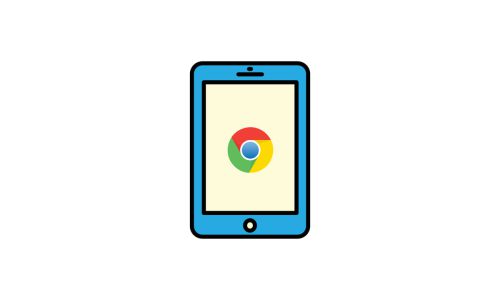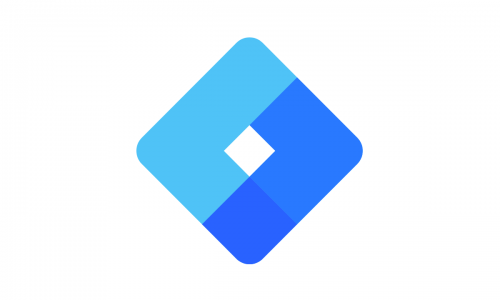Table of contents
Just a few years ago, pop-up windows were completely passé. They were more associated with cheesy websites straight from the 90s and “infected” computers than with an effective form of advertising. However, currently, this form of communication with the audience is experiencing a renaissance. Is it worth using? As the classic would say, “yes, but…”. How can it be done to achieve the intended result instead of the completely opposite effect of increased page abandonment? Discover research and key recommendations on the use of pop-ups on service-based business and e-commerce websites.
Pop-up Windows – What Are They?
Pop-ups are popup windows that appear on a website and contain some additional message. They can serve various purposes, such as:
- Presenting a request for consent to the privacy policy and terms of use of the website – in the era of GDPR, this is an annoying necessity for most services,
- Requesting acceptance of Cookies, most commonly done through consent mode*,
- Confirming the user’s age if the website contains adult content.
These are the pop-ups that sometimes “obligatorily” have to appear on a website. But today, we will focus on those that serve a more marketing-oriented role. We are talking about pop-ups that are used for:
- Lead generation,
- Acting as CTAs – encouraging, for example, to visit a specific subpage, follow your social media, download an e-book, etc.,
- Subscribing to a newsletter and thus obtaining potential customers’ emails,
- Informing about loyalty actions and increasing the conversion rate – discounts, promotions, limited-time sales, etc.,
- Retaining the user before leaving the page – for example, by reacting to cursor movement towards the top bar of the browser.
Do they work? Yes, provided that they are properly utilized. Otherwise, even if statistics indicate high interaction with the pop-up, it may decrease the user’s value and revenue on the website as a whole while increasing the percentage of page exits.
*Consent mode – In 2020, Google introduced a new consent acquisition mode known in the marketing world as Consent Mode. By utilizing this mode, it is possible to safely analyze users’ behavior on our website, even if they have not given consent to measure their actions and conversions. This is particularly important for Google Ads campaigns and soon for data analysis in Google Analytics 4 as well. Using Consent Mode also allows us to comply with all the requirements of GDPR and protects us from potential penalties for analyzing user behavior on the website without their consent. This change in the cookie collection method enables us to recover data from up to 40% of untracked traffic under the standard consent mode.
Too much of a good thing is unhealthy
If you’ve already started planning to add multiple pop-ups to your homepage or landing page, take a moment to pause. Remember a few important things.
- As Internet users, we have become accustomed to pop-up windows. Therefore, especially when there are several of them, our brains “filter” them, often resulting in the automatic and very quick closing of the pop-up. The more pop-ups you place, the greater the chance that they will be completely ignored. What’s worse, they can also cause irritation and lead the user to leave your website altogether. According to a report by ExpertSender, in 2020, 92% of Poles abandoned at least one shopping cart per month. The most commonly cited difficulties directly on the website were… pop-up ads!
- Improperly used pop-ups can lower the SEO value of your website. Google has been penalizing them for some time now because they impede access to the content of the page. Therefore, placing a “welcome mat” type of pop-up that covers the entire or a significant portion of the site’s content is classic marketing self-sabotage.
- Pop-ups that cannot be closed with a visible and understandable “X” or can only be closed after a specified time are also penalized by Google. However, this not only takes away valuable ranking points for search engine positions but also valuable users. According to studies, users spend no more than 5 seconds deciding whether it’s worth staying on a particular website. Persistent ads usually lose the battle for converting the user. While this action may increase the interaction rate with the pop-up, it’s not the goal to have the user click on the pop-up in search of a way to close it instead of clicking on the “purchase” or “contact” button, right?
So, how, where, and when should pop-ups be placed?
Pop-up goes by many names
The pop-up is essentially a window that appears on the content of a page, either below or above it. It’s the kind that you can easily close to gain access to the entire content. Well, at least in theory, because in practice, sometimes it’s hard to find the close button without a microscope. 😉 However, the definition of a pop-up encompasses many variations of this form of communication. The main types of pop-ups that we distinguish are:
- Welcome mat – these are the ones that “cover” the entire page, like a roller blind over a window.
- Overlay – these pop-ups display in the middle of the screen, on top of the content.
- Top banners – they appear above the content, are small in size, and do not disrupt the browsing experience.
- Slide-in boxes – these formats “slide in” from the side or bottom of the page but remain on the periphery of the main content.
Google primarily penalizes the first two types – those that impede access to the main content. However, this doesn’t mean you have to completely abandon them. Sometimes, they can be very useful. However, you must remember to ensure they appear on the website at the right moment.
According to John Mueller from Google, pop-ups are penalized when they appear immediately after a user transitions from the search engine results pages (SERPs) to a website. However, this is not the case for full-screen ads displayed when moving from one subpage to another within the same domain. Therefore, if you have strong reasons to use full-screen ads, you can employ them in this manner without directly risking a penalty from Google. What reason would be the best? Undoubtedly, it would be data from conducted A/B tests confirming that a pop-up ad converts best on a specific website.
To properly evaluate this, separate tests should be set up for mobile and desktop using tools like Google Optimize, and the results should be analyzed in Google Analytics with segments from these tests. The most important data to examine will include the percentage change in user value on the site, the subpage value with the pop-up, the exit rate, and the conversion rate on the page.
Are you interested in conducting reliable A/B tests on your website? See how our analytics and UX specialists can help your business!
When should a pop-up appear?
The mandatory ones, which are required by law, should appear at the beginning. However, marketing pop-ups can appear on the screen at a completely different moment. Why? For example, to grab attention and prevent them from being closed in a fraction of a second without being read.
The most common triggers for pop-ups are:
- On page load – this approach works well, for instance, if you want to inform the customer about an ongoing promotion or sale and provide them with a discount code or offer another “good news” that shouldn’t be overlooked. Such a pop-up must provide actual benefits and value to the user who enters a specific subpage or website. Therefore, it’s not worth offering promotions, for example, on chairs in the “lighting” category.
- When the page is scrolled to a certain point – this often happens on landing pages. After the user has read a portion of the offer details and reached a point where, according to scroll depth maps, users typically leave the page, a pop-up appears encouraging them to leave their information.
- User interaction – such as clicking on a specific field or hovering over it (this also works well on landing pages).
- After a specific amount of time spent on the page – for example, after a few minutes when the sender is confident that the reader is interested in the presented information and needs to disrupt their cognitive patterns.
- When the user attempts to close the tab or quickly moves the cursor to the top bar of the page – the purpose of displaying a pop-up is the last attempt to retain the recipient who did not take the intended action as intended by the website.
Do pop-ups have to be annoying?
Absolutely not. Indeed, if you bombard the recipient with repeated requests for their information, sales discounts that don’t interest them, or unnecessary information, you will achieve the opposite effect of what you expect. Especially if the pop-ups themselves are aggressive, loud, and pretentious. Subtlety works much better in modern marketing. Customers don’t like to be forcefully pushed through the marketing funnel. However, you can accompany them on their way toward conversion without hindering their progress, but rather supporting them in reaching a mutually beneficial goal.
As mentioned above, a poorly designed pop-up can be perceived as highly irritating. The research described by Bunnyfoot and TheNextWeb indicates that nearly half of all ads are closed even before they finish loading. However, the audience to whom the pop-up is displayed plays a significant role. This form of communication can affect users differently based on their profile, engagement, and determination to reach their goals on the website. Even ethnic characteristics can have an impact.
Polish users are impatient internet users who quickly become frustrated and are sensitive to any elements that hinder their progress toward conversion. The IAB report highlights that in 2017, 42% of internet users in Poland over the age of 15 used ad-blocking plugins, a result significantly higher than similar studies in many other countries. It can be assumed that since the data was collected at the end of 2017, this indicator has significantly increased in response to the growing emphasis on digital marketing in the Polish segment of the internet.
What to do to make pop-ups work?
- Offer something truly attractive and relevant to the recipient’s interests. For example, on a blog dedicated to content marketing, a pop-up encouraging the recipient to sign up for a newsletter with similar posts might work well. On an online store, a pop-up with a discount code would be effective.
- Timing is important. Think about when it would be best to display the pop-up. Perhaps after the user has spent some time interacting with the website?
- Use engaging language. The message on the pop-up should be short, light, and clear. For example: “Interested in content marketing? Sign up for our newsletter to stay updated on industry news. No spam. Just valuable information.” This message encourages the user to leave their contact details in a non-intrusive way. Don’t forget the call-to-action!
- Remember to adapt pop-ups for mobile displays. Currently, over half of the website traffic in Poland comes from smartphones. Take this into account when designing your pop-up windows.
- Customize the message based on the referral source. Each traffic source has slightly different goals and needs. For example, users from social media and the Google Display Network (GDN) are often non-intentional users, which means their conversion path should not be prolonged or made difficult. Quick and emotionally appealing actions are needed in such cases. Tactics emphasizing limited availability, such as the message “Promotional price valid only today!” tend to work better.
How to measure the effectiveness of a pop-up window?
According to research conducted by sumo.com, the top 10% of the most effective pop-up windows have an average conversion rate of 9.28%. The average conversion rate for the entire sample (1,754,957,675 pop-up windows) is 3.09%. In this case, conversion is defined as the user taking action after seeing the pop-up window.
However, when it comes to such statistics, the methodology is important. Some companies that create and sell pop-up widgets try to “creatively” present results to encourage the use of their solutions, often for a fee. If someone assumes, for example, that every user who makes a purchase and has had previous contact with a pop-up window counts as a conversion “achieved” by the pop-up, this is fundamentally flawed thinking – it is important to be aware of this. Interacting with a pop-up often involves attempting to close the window.
It is also important to remember that a pop-up is a significant intervention in the website’s user experience (UX), which has consequences. Providing the conversion rate of the widget alone without considering its impact on the holistic perception of the website and overall conversion is an analytical own goal. What good is it to force a user to sign up for a newsletter or watch a video, resulting in increased statistics if it comes at the cost of a decrease in overall conversion or a drop in search engine rankings due to Google penalties? Another scenario is more frequent purchases but with smaller order values and overall lower revenue generated by the website. It is worth considering the KPIs (Key Performance Indicators) and whether those metrics truly align with the overarching business goals of the website before implementing a pop-up.
Pop-up – Summary
Does a pop-up make sense, then? As is often the case in the online world, yes, but only under specific conditions. It’s worth checking, researching, and confirming your intuition with reliable data. Want to find out if a pop-up on your website increases or decreases conversion? Opt for reliable A/B testing! Of course, we can help with that – contact us today for a free quote!












